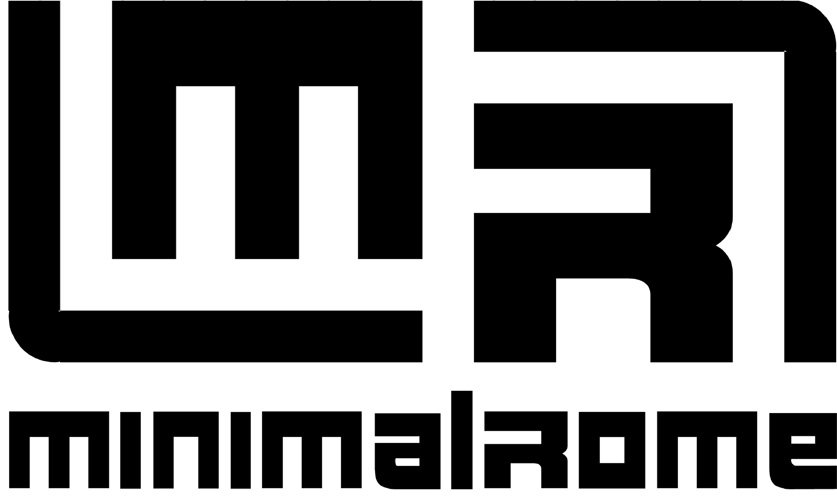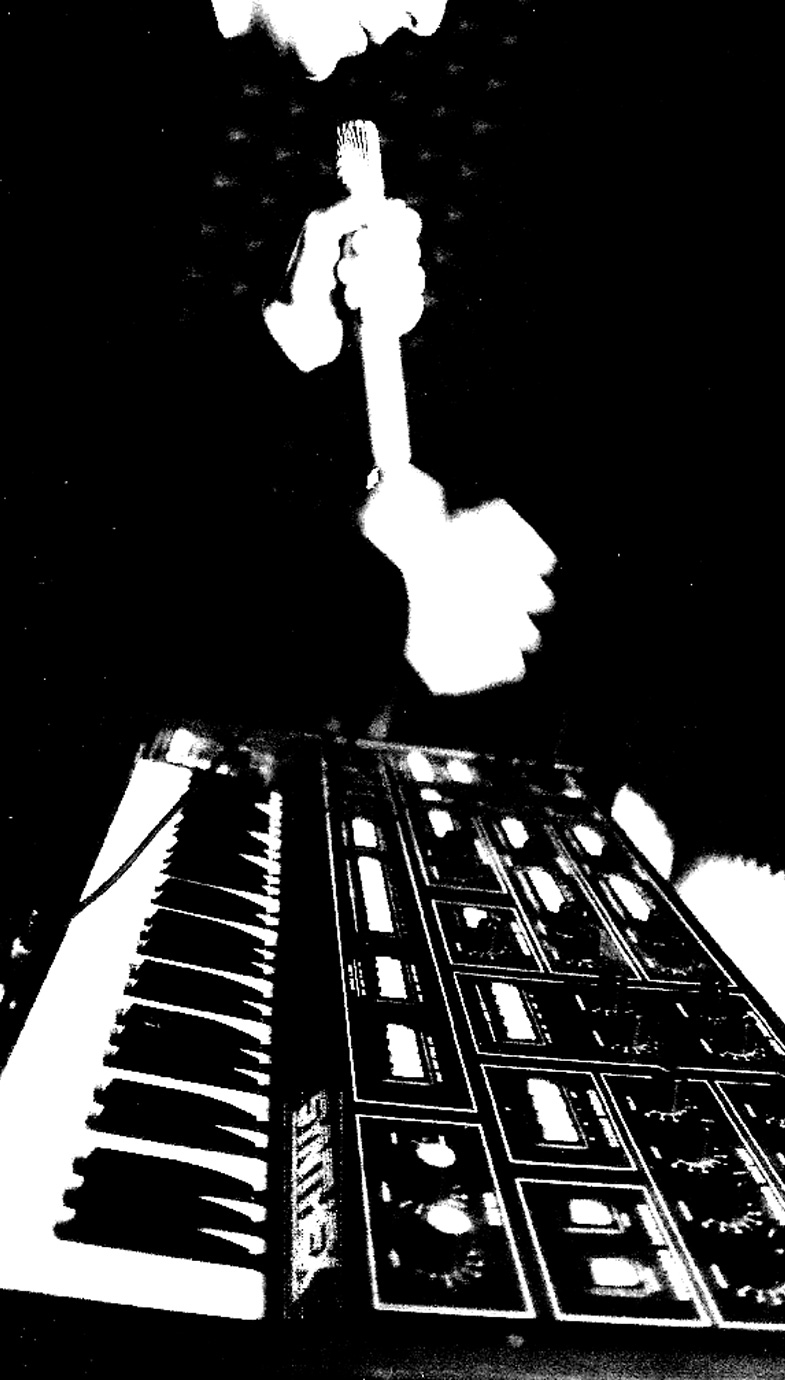Minimal Rome Feature
 Toby Frith
Toby Frith  Tuesday, March 15, 2011 at 01:49PM
Tuesday, March 15, 2011 at 01:49PM 
Words : Toby Frith
The early Nineties were a potent period for techno and electro, giving birth to a number of scenes across the US and Europe. In Rome, the psychedelic acid of Lory D and and Leo Anibaldi had already given birth to a scene that would later be influential in providing careers for musicians such as Donato Dozzy and Giorgio Gigli. On the underbelly though, taking their cue from the brutal acid of Bunker Records and illegal raves, Valerio Lombardozzi and Gianluca Bertasi came together to form what would later be known as Minimal Rome. In recent times this label has produced a number of intriguing and singular electro records built around a love of analogue equipment. More prominently, Valerio’s Heinrich Dressel project, which keeps the strong lineage of Italian soundtracks alive, combines cinematic music with an unusual theme of archaeology. I took time out to talk to Valerio about the history of Minimal Rome and his own music.
Back in 1993 we were very much a part of that scene in Rome. We were buying records from ACV, Dropbass Network, Magnetic North and of course the first Bunker records from Holland. Those in particular were so amazing. They had a unique, dirty sound that we loved and of course were very uncommercial. Tracks like “Panta Rhei”, “Beat that Perculator” and the first Acid Planet record were very big for both for us. Gianluca and I used to play them at illegal parties. We were also part of a collective/radio show called the Hard Raptus Project back then and this is where the roots of Minimal Rome really started.
It’s important to note that this label isn’t really related in any way to what many people may think of when they hear “minimal” other than they share a love of rhythm. The distinctive title with the geographic suffix was created by Valerio to give Rome a new voice after the glory of the early 90s.
If you go back to the latin definition, “minimum” means the smallest possible amounts – essential. It does not define a music genre, but a lifestyle and a world vision. To us it’s all about keeping out the unnecessary and cutting to the bone. When the radio show ended, we kept quiet for a little while until 2003 when we decided to start the label to give voice to a new electronic scene. It was important for us to keep the DIY ethic from the past and to start with a new chapter and collection of artists from Rome.
The first releases were compilations, with contributions from older artists in Rome such as SeventySix and Autovox alongside new ones such as Andreas Herz aka Kobol Electronics. In time though, a steady stream of contributors has resulted in an impressive back catalogue of unusual and absorbing electro, acid and techno. Much of the music is steeped in analogue tradition and whilst you can hear the harsh heritage of those old illegal raves from the nineties, there’s a real character to it that is rewarding upon repeated listening. The all-pervasive influence of Drexciya is plain to hear, but it’s not overbearing.
From the beginning, our task has been to try and create something new here in Rome in a non-commercial way. We prefer analogue equipment as we believe that it’s not so easy to compose music this way. It’s a choice of heart too – there is no prejudice on our part against people using virtual synths or software like Ableton. It’s just that we don’t like them. Oscillators and knobs are far more enjoyable and we prefer their sound.

Valerio releases under names such as Composite Profuse and Teslasonic, but it was under his Heinrich Dressel guise that Minimal Rome came to the fore. Initially releasing his first album on Danny Wolfers’ Strange Life label, Valerio released a further two as part of a planned trilogy on Minimal Rome, with all three displaying a rich cinematic atmosphere. Valerio’s pseudonym is taken from a famous nineteenth century German archaeologist.
After some years producing as Composite Profuse, I started thinking about a new project that was about me and as a sort of soundtrack to where I live. I have always listened to 70’s prog music, mainly the Canterbury scene and of course those great Italian soundtracks. These were my inspiration.
When I was very young, I used to go to Monte dei Cocci (The Holy Hill) with friends. Our school was in front of it and we usually went up it to play. It’s actually the slang for Monte Testaccio, which is an ancient man-made hill formed 2000 years ago by crockery and broken amphoras brought there from the nearby port of Ripa Grande. It has a big place in my heart as it’s the origin of my family, where I grew up and now where I work.
Because of its legendary historical and archaeological meaning, I decided to pay tribute to it with the first Minimal Rome release called “Broken Pots Hill”. In the following years I then started to develop the Henrich Dressel project as an imaginary soundtrack to these places. He was a famous German archaeologist who classified the amphorae from the area. So the “Studium Amphorae” trilogy tells the story of how he explored Monte Testaccio and his own vision.
Although he has no plans to release any more albums under this pseudonym, Valerio does have some ideas about expanding the tale of Monte Testaccio with some other characters. A listen to the Dressel material evokes memories of the Italian soundtrack movement that is still so central to many of the musicians that have emerged from this country. More importantly, it has a rich melodic structure that bodes well for future releases by him. At the very heart of this vibrant synthesizer journey is the Elka Synthex, whose plangent tones and warm sound give his compositions a very strong tone.
It was a synth developed by the Italian engineer Mario Maggi in 1982 – a very lush sounding classic considered by many to be the last great analogue one made. It was the first one I ever bought in 1996. I was very lucky as the father of one of my closest friends had one along with a number of others and decided to sell it. He knocked on my door and said “I’m going to sell it, so it’s yours”. I couldn’t believe it as he sold it to me for what was around E350, a crazy price back then. I love the sound she makes, the structure and the way “she” processes the sound. I could never sell her – she is my “ammiraglia”.
Some recommended Minimal Rome records below. Future releases include Solvent, a second JTC record with a Mick Wills remix on the side project MRX label and the third in the Urbi et Orbi compilation series.

Reader Comments